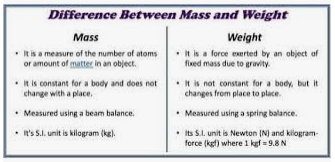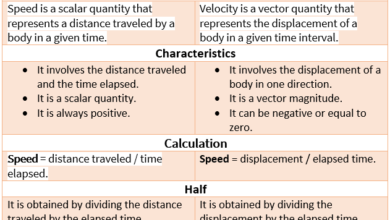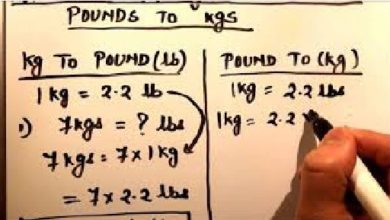Difference Between Mass and weight
Mass vs weight is a frequently asked question in physics students or ordinary conversation and many of us consider both terms mass and weight interchangeably which leads us to a completely wrong perception. the basic difference between mass and weight is that mass is the amount of matter that a body contains. it is measured as an internal property of an object and weight is the action exerted on the body by the force of gravity. the force which supports an object is called weight. for example, the gravitational pull by gravity to the earth gives it a downward positive acceleration equal to 9.8 m/s2.
In this post, you are going to learn about Mass vs weight step by step with Diagrams.
This post also includes:

- Mass vs weight overview
- Comparison of Table
- What is mass?
- What is the weight?
- Lots more
So if you want to get benefits from this post you’ll love this post.
Let’s Dive right in…!
Overview
the mass of an object remains the same even if we change the location of the object but the weight of the body or object varies by changing its location depending on the force of gravity acting on the body. to understand the difference between mass and weight let’s take an example. A person has a mass of 50 kg on earth.
when he travels on the moon, the mass will remain the same at 50 kg but its weight will decrease 6 times on the satellite or moon. this is because of the force of gravity difference. The force of gravity on the Moon is 1,622 m / s 2 while on Earth, it is 9.8 m / s 2.
Difference Between Mass and Weight in Tabular Form | |
Mass | Weight |
| It is a scalar quantity that has only magnitude. | It is a vector quantity that has both magnitude and direction. |
| The amount of matter in a body is called mass. | The action exerted by the force of gravity is called weight. |
| Possess a constant value. | Its value is variable depending on the position. |
| You can measure the mass of the body with a physical balance like pan balance, electronic balance, or inertial balance. | A dynamometer is used to measure weight. Also measured with a spring balance. |
Unit of measurement:
| Unit of measurement:
|
| It is an Intrinsic quantity. | It is an Extrinsic quantity. |
| SI Unit is (Kg) and the CGS unit is (g) | SI Unit is Newton (N) while the CGS unit is Dyne. |
| It is a fundamental property of matter. | It is a derived property of matter. |
| Dimensional Formula is [M] | Dimensional Formula is [MLT-2] |
| The mass of a moving body is F=m/a | It varies from place to place. |
What is Mass?
the amount of matter that an object contains is called mass which is a quantitative measure of a body’s resistance to acceleration. it is a scalar quantity that has only magnitude, not direction. the resistance of crockery on the table when the tablecloth is pulled out is a common example of mass. it is independent of the location of the body and remains the same at any position of the body because it is an intrinsic quantity of matter.
due to an extensive property of matter, mass is highly dependent on the quantity and size of the system under which it is studied. what does that mean?
well, let’s suppose e have a 1Kg of any substance. we just take 0.1g of that substance as a sample but the original mass will not be equal to the original object.
You May Also Like: Difference Between Intensive and Extensive properties
How do m measure the mass?
mass can be measured by means of a physical balance by taking a sample of known standards. it is expressed as (Kg) in the System international of units (SI). the mass can be defined as under the terms of plank’s constant (h) it is a fundamental constant of quantum physics that is universal:

it is a definition prototype of the international kilogram that has replaced the older kilogram definition. this is equal to the mass of some metals like iridium or a cylinder of platinum. these metals were present in custody at the International Bureau of Weights and Measures in Sèvres, France in 1889.
What is the weight?
since weight is known as a gravitational force which is exerted normally by the earth or any other elastic type body on the object. the gravitational force remains equal to the product of the mass of the object and the gravitational object value.
it is denoted by:
P= m.g
the value of gravitational acceleration remains constant on earth which is approximately equal to 9.8m/s². the above formula indicates that weight (P) is directly proportional to the mass (m) of that object. hence, the increase in mass will bring an increase in the value of g.
also, weight is a vector quantity that has direction, sense, and intensity. it is the measurement of the resulting action of the earth’s gravity. it is a variable value that does not remain constant.
How weight is measured?
A dynamometer or spring scale is used to determine the weight of the body. it is protected by a coil spring and measures the applied force at the end of the pointer.
the formula of weight is given by:
1N=1kg.m/s²
You May Also Like:

